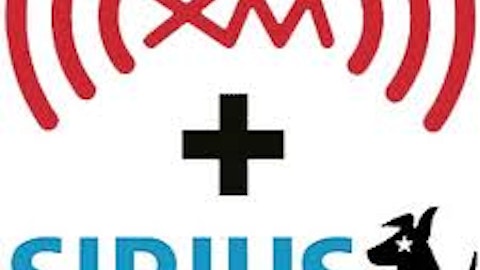Car sales figure, or Auto SAAR (Seasonally Adjusted Annual Rate) as it is called in industry language, plays the role of an essential catalyst for auto stock prices given that it’s a clear indicator of demand trends in the industry. Those who have been following the industry know very well that auto sales came in weaker-than-anticipated in both March and April, which sent bearish signals to the market. However, the industry saw a rebound in May. June sales have reinforced this idea that auto industry is well on its way to post strong sales in 2013.
However, the question remains: How strong could sales be? By the start of the year, many were predicting SAAR to be 16 million for the year. Will it be possible? Let’s find out.
What is SAAR?
Before we discuss the key takeaways of this month’s auto sales, it is important to understand what SAAR is. Many readers tend to get confused between the actual sales and the SAAR figure. While the actual sales figure shows us the actual amount of vehicles (in units) that have been sold in a particular month, the SAAR figure depicts the selling rate of vehicles for a particular month. By this I mean that a SAAR rate of 15 million for a particular month indicates that the auto industry is on pace to sell 15 million vehicles on an annual basis.
Key takeaways from this month’s SAAR were:
Beware of frothiness
June U.S. light vehicle SAAR came in at 16.0 million, ahead of Street consensus of 15.6 million. The SAAR result was above the June 2012 print of 14.4 million and also sequentially ahead of the May print of 15.3 million. The June print was the best monthly SAAR result since November 2007, and occurred without any artificial boosts.
A strong finish to the first half sets up a ~15.7 million – 15.9 million pace in the second half of the year, and hints at a 15.5 million figure for 2013.
However, one should be beware of frothiness. There is no doubt that the June result was healthy and came without any unnatural boosts, as sales benefited from a release of pent-up demand (given a highly aged fleet) amidst overall strong economic conditions (i.e. consumer confidence, housing).
These factors are likely to persist in the second half of 2013, and combined with continued robust sales of large pickups, second half sales are expected at a 15.7 million – 15.9 million pace. Such a pace makes case for 15.6 SAAR for 2013. Beyond this, though, investors are urged not to resume frothy views on the industry, as the Street sees a 16 million-plus pace in second half as unlikely.
Pickup sales remain strong
Pickups continue to lead the way with pricing remaining strong. The large pickup segment was up 23%, solidly outpacing the rest of the industry which was up only 7%. Large pickup mix as a percentage of total sales was 11.8%, up 130 basis points year-over-year, and represented the best June for mix since 2007, when it was 12.6%.
This momentum is expected to persist into the second half given an aged fleet, as well as strength in housing and other industries, such as energy. Perhaps more impressively, the strength in the segment has come amidst healthy pricing.
Did QE tapering risk impact auto sales?
Although there had been concern by some that the pace of sales would moderate after the Federal Reserve signaled it would begin to taper its QE program, the June sales result proved otherwise.
Sales remained strong, as rates for 48 month auto loans remained low at 2.58%, representing a mere 12 basis point sequential increase, while down 125 basis points on a year-over-year basis – indeed, little evidence of a rising rate environment. Talk of potentially higher rates has likely not yet been absorbed by most consumers, and even if it becomes more prevalent, broader economic conditions, as well as pent-up demand and new product offerings are expected to keep new car demand robust.



